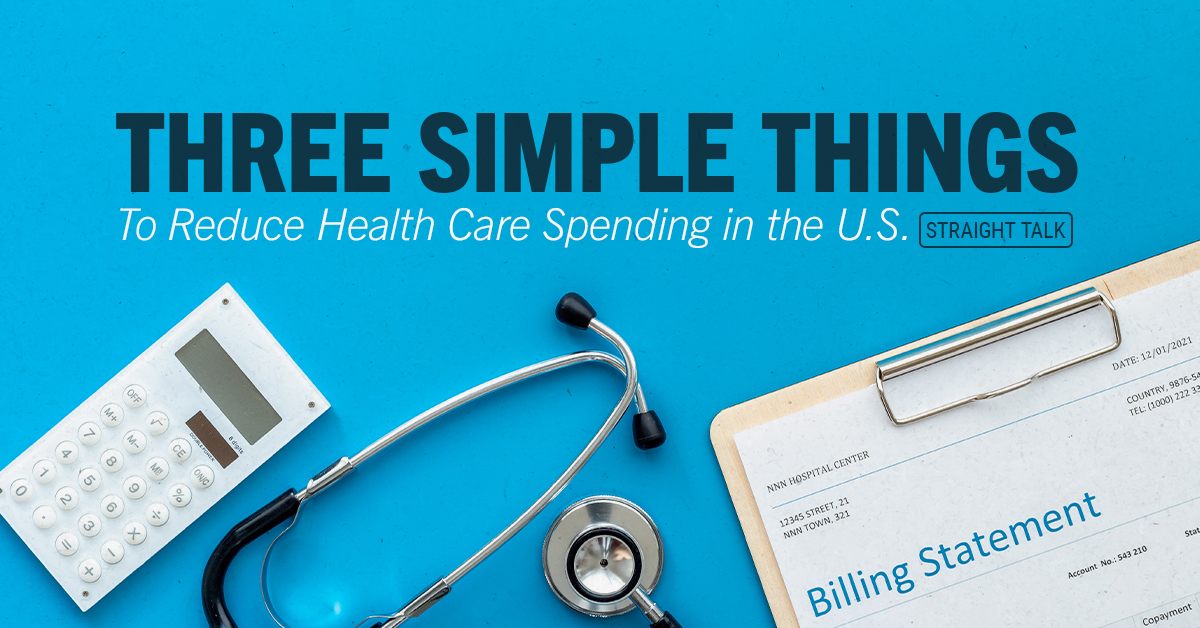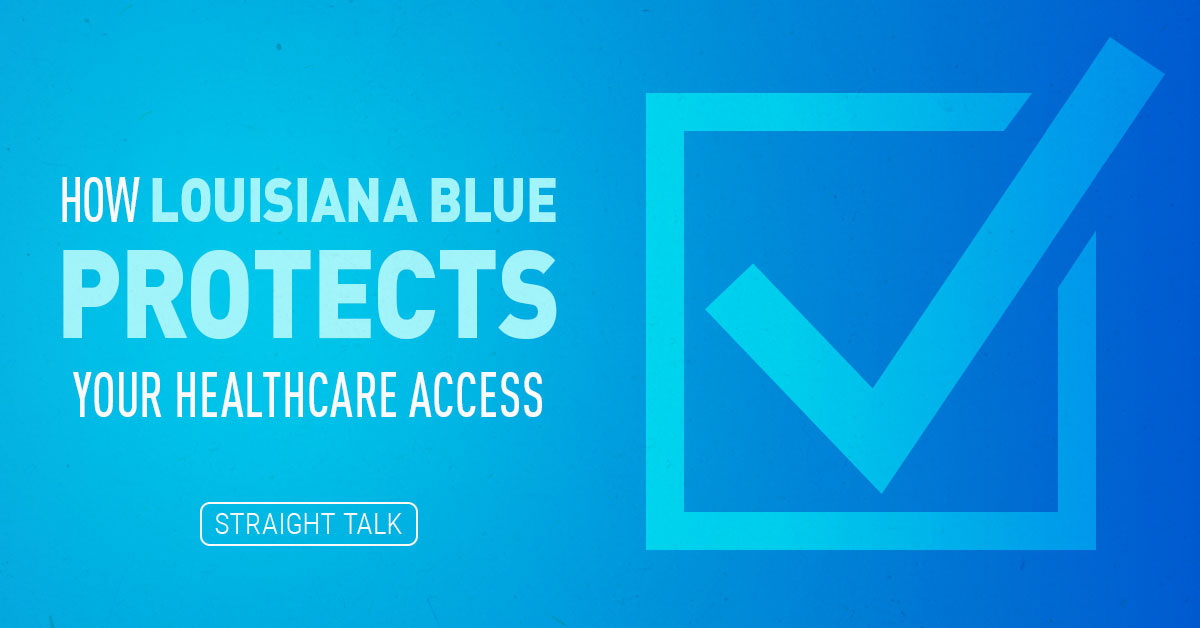*With thanks to Phil Ellis, Ph.D.!
One of the coolest things about being a Blue Cross and Blue Shield of Louisiana member (as over 1.9 million Louisianians are!) is that we are part of the Blue Cross Blue Shield Association that covers health insurance for 119 MILLION Americans across plans! Think about that for a minute …
Everywhere you go in this amazing country of ours, whether it’s New York, Florida, California, Texas, tiny Rhode Island or huge and spectacular Montana, you will be surrounded by fellow Blue Cross members. Out of 330 million Americans, those 119 million people with Blue Cross cards in their pockets represent 36% of the U.S. population. Essentially, wherever you go, look around and the odds are every THIRD PERSON you see will be a fellow Blue Cross member! It’s staggering to think about.
One of the really big benefits of being a part of such a gigantic family is that here in Louisiana, we get access to research and meaningful information that we could never gather on our own. In my job, I analyze this incoming data every single day and try to understand what it means for all of us.
Today, I’m reading a study by a fellow economist named Phil Ellis, Ph.D. The Blue Cross Blue Shield Association asked Phil to complete this study based on the Association’s proposed policy solutions. Phil worked for years as the chief economist for the Congressional Budget Office in Washington, D.C. This means he got to score federal legislation and, whenever Congress wanted to make changes in law or regulation, Phil got to tell them what those changes would do to taxes, spending and the U.S. economy. And he used the rigorous methods the Congressional Budget Office uses to analyze the Association’s ideas.
In his latest research, Phil takes a hard look at a few things the federal government and various agencies could be doing and what impact those would have on spending. Sometimes, changes that look good on paper don’t do anything positive when you study them. Sometimes small changes make BIG impacts on your costs. And sometimes doing nothing is the best out of a list of really bad options. Phil’s expertise is in separating the wheat from the chaff in those situations and telling the decision makers (in this case, members of Congress and heads of federal agencies) what will work and what won’t.
I thought it would be good to apply the Straight Talk treatment to Phil’s latest work and let you see three of the top health-related topics they are thinking about up there in Washington.
1. What Does “Site-Neutral Payment” Really Mean?
The first proposal we are going to work on today is site-neutral payment policies. It turns out that when a patient has a health service at a facility owned or run by a hospital versus a non-hospital setting, the service is WAY more expensive. Once a hospital takes over running medical services, they tend to add charges that really have nothing to do with the cost of providing it. These extra charges bring no value at all to the patient and are usually used to shore up the hospital’s finances or help them earn back the money they spent to buy out other medical providers.
In general, site-neutral means you pay the same amount for a particular service regardless of where you get care. For example, if your doctor orders an MRI and you go to a hospital-based or -owned radiology center to have the MRI, you can expect that to cost MUCH more than if you go to a non-hospital-based or -owned imaging center. Here’s a real world example where the hospital was charging 10 TIMES AS MUCH for the exact same test as a free-standing, non-hospital-affiliated center. I’d like to say that this is unusual, but it’s not.
Phil’s thought was, “What if a really big payer, like Medicare, refused to pay more than the non-hospital site’s charge no matter where the MRI was done? And then all the private insurance companies could follow suit.” And this just isn’t MRIs, by the way — there are hundreds of procedures and tests that are much more expensive to have once you get a hospital involved. Things like colonoscopies, mammograms, bone and joint procedures, etc. Turned out in Phil’s research that creating and enforcing such a policy would save us all a ton of health care dollars. How much?
How about $471 BILLION over the next 10 years! And fully $150 BILLION of that would be saved directly from the pocketbooks of patients like you and me. That’s the power of site-neutral payments, and you might want to consider chatting up your congressperson or Senators about it.
2. Biological Patents and Exclusivity Periods
The next big thing that Phil talks about in his research could save us $101 BILLION over the next 10 years ($23 BILLION of that right out of our pockets) by limiting the legal maneuvering pharma uses to stop replacement drugs from coming onto the market for decades. These potential savings are from biosimilar drugs for hugely expensive treatments like AbbVie’s Humira. It took 20 years of legal wrangling, research, investment and plain old drama to get replacement drugs for Humira onto the market. During that time, AbbVie raised the price of Humira, with no economic justification whatsoever, by almost 400%.
But what if there were legal limits to the time these biologic drugs had the playing field all to themselves? Non-biologic drugs typically have exclusivity for about seven years, not 20 like Humira did. Allowing replacements in a more reasonable time frame (say 10 years) could generate the savings I mentioned above, putting $23 billion back into patients’ pockets over 10 years, and saving the entire system over $100 billion in that same timeframe.
3. Drug Advertising
The last thing Phil studied that I want to highlight is direct-to-consumer drug ads. I know you already know what this is because you have to suffer through these ads every time you flip on a screen. Pharma spends billions every year flogging drugs that the majority of patients don’t need and that cost exorbitant prices. Why? Just to motivate you to mention them to your doctor the next time you are at an appointment.
These low-value drugs, combined with attractive advertising, drive tons of spending. And Phil estimates that taxing these ads (or forcing the drug companies producing these ads to prominently display the actual price of the drugs IN the ad) could reduce health care spending by $63 BILLION over the next 10 years, with $12 billion of that going directly back into consumers’ pockets. Huge savings!
The Straight Talk is, Phil’s research is clearly pointing out real changes that could save us over $600 BILLION in the next decade! The Blue Cross and Blue Shield Association is working hard to lobby for these changes that will improve the affordability and access of important healthcare services and medications. Going forward, we’ll be raising awareness of these important potential changes.
Check out these Phil Ellis links – he’s an interesting cat!





Leave a Reply